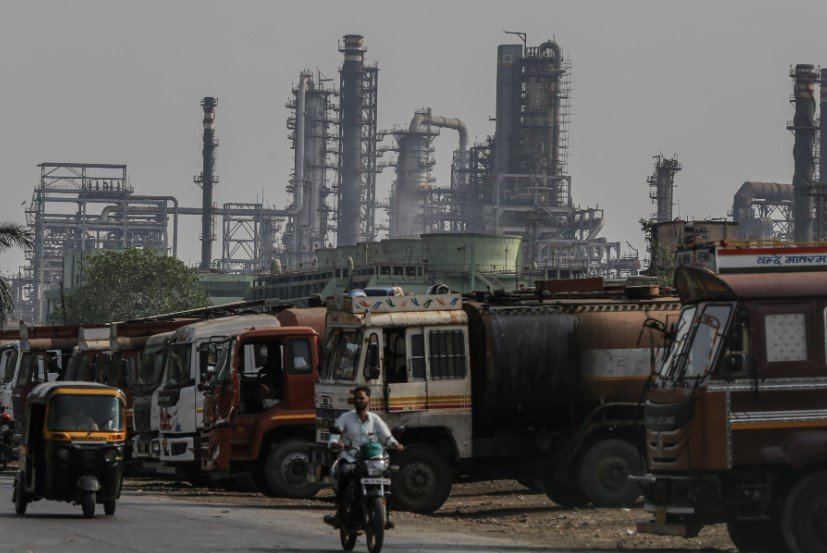White House briefing turns combative as Trump doubles down on India trade penalties, hints at similar moves against China
Just hours after slapping an additional 25% tariff on Indian imports—bringing the total to a steep 50%—U.S. President Donald Trump fired off another warning from the White House podium: secondary sanctions could be next.
Asked directly why India was being singled out for buying Russian oil when other countries, including China, continue to do the same, Trump’s answer was characteristically blunt, vague, and loaded with intent.
“It’s only been eight hours,” he said. “So let’s see what happens. You’re going to see a lot more… You’re going to see so much secondary sanctions.”
The remark, made during a press briefing on Wednesday, has sent shockwaves across global trade circles—and raised fresh fears in New Delhi.
A tariff bombshell, now followed by threats
The new 25% tariff on Indian goods came into effect at midnight on August 7, part of a broader package of duties Trump announced this week on dozens of countries. The surprise hike—targeting sectors like pharmaceuticals, auto parts, metals, and textiles—was already causing unease in Indian export circles.
But the secondary sanctions threat? That’s a different ballgame.
Unlike tariffs, secondary sanctions penalize third-party countries or companies that do business with a sanctioned nation—in this case, Russia. For India, which has maintained strong energy ties with Moscow even after the 2022 invasion of Ukraine, this could mean financial institutions, oil refiners, and shipping firms getting locked out of the U.S. financial system.
One sentence from Trump turned that risk from abstract to real.

India caught in the crosshairs
Indian officials have so far reacted with caution. An external affairs ministry source said they are “studying the implications” of Trump’s remarks and waiting for formal diplomatic communication before making any public statement.
But behind closed doors, the frustration is building.
“India isn’t violating any international rules,” said a former Indian ambassador to the U.S. “We’ve reduced Russian oil purchases substantially in 2025. This looks more like political theater than policy.”
Indeed, Indian oil imports from Russia have dropped by nearly 20% compared to 2024, as per data from S&P Global. But Washington doesn’t appear impressed.
What exactly are secondary sanctions—and why they matter
Let’s break it down for clarity.
• Primary sanctions target the country in question (Russia).
• Secondary sanctions punish other countries or companies that do business with the sanctioned country.
• In practice, this could block Indian banks or shipping firms from accessing the U.S. financial system.
• It can also scare off multinational insurers, financiers, and suppliers—crippling trade indirectly.
The U.S. used this model aggressively during the Iran nuclear standoff. And it worked. Firms in Europe and Asia backed off, even if their own governments opposed the sanctions.
Now Trump is threatening to deploy the same hammer again.
What’s behind Trump’s India fixation?
There’s no clear-cut answer, but analysts point to three possible drivers:
-
Political optics: Trump’s 2025 strategy leans heavily on economic nationalism. Hitting India on trade reinforces that tough-on-trade image.
-
Russia frustration: Washington has quietly grown irritated by India’s continued energy and defense ties with Moscow.
-
China triangulation: By warning both India and China, Trump keeps rivals on edge and U.S. allies guessing.
But there’s also a more personal dimension. Trump has long believed that India “takes advantage” of the U.S. on trade. Back in 2019, he revoked India’s GSP status. Now, with a stronger grip on the White House, he may be looking to finish what he started.
Semiconductors next in line?
Adding fuel to the fire, Trump also hinted during the same press conference that semiconductors—yes, the chips inside everything from iPhones to Teslas—could be the next target for tariffs.
“We’re looking at it. Could be 100%,” he said, waving his hands. “Depends on how we do.”
That one sentence was enough to rattle markets. Shares of chipmakers like TSMC and Samsung dipped in after-hours trading, while U.S. tech firms braced for higher supply costs.
If tariffs on semiconductors do come through, expect global tech supply chains to feel the tremors.
Global reaction: Confused, cautious, and critical
Other countries, while not directly named in Wednesday’s threat, are watching closely. China’s foreign ministry called the comments “an abuse of economic coercion.” The EU issued no immediate response, but diplomats in Brussels privately expressed concern over the ripple effect on the global financial system.
India’s closest allies—Japan, France, and the UAE—have reportedly opened backchannel discussions with Washington to seek clarity.
For now, though, Trump appears unfazed.
“You’ll see what happens,” he said again, wrapping up the briefing. “It’s going to be great. For America.”
